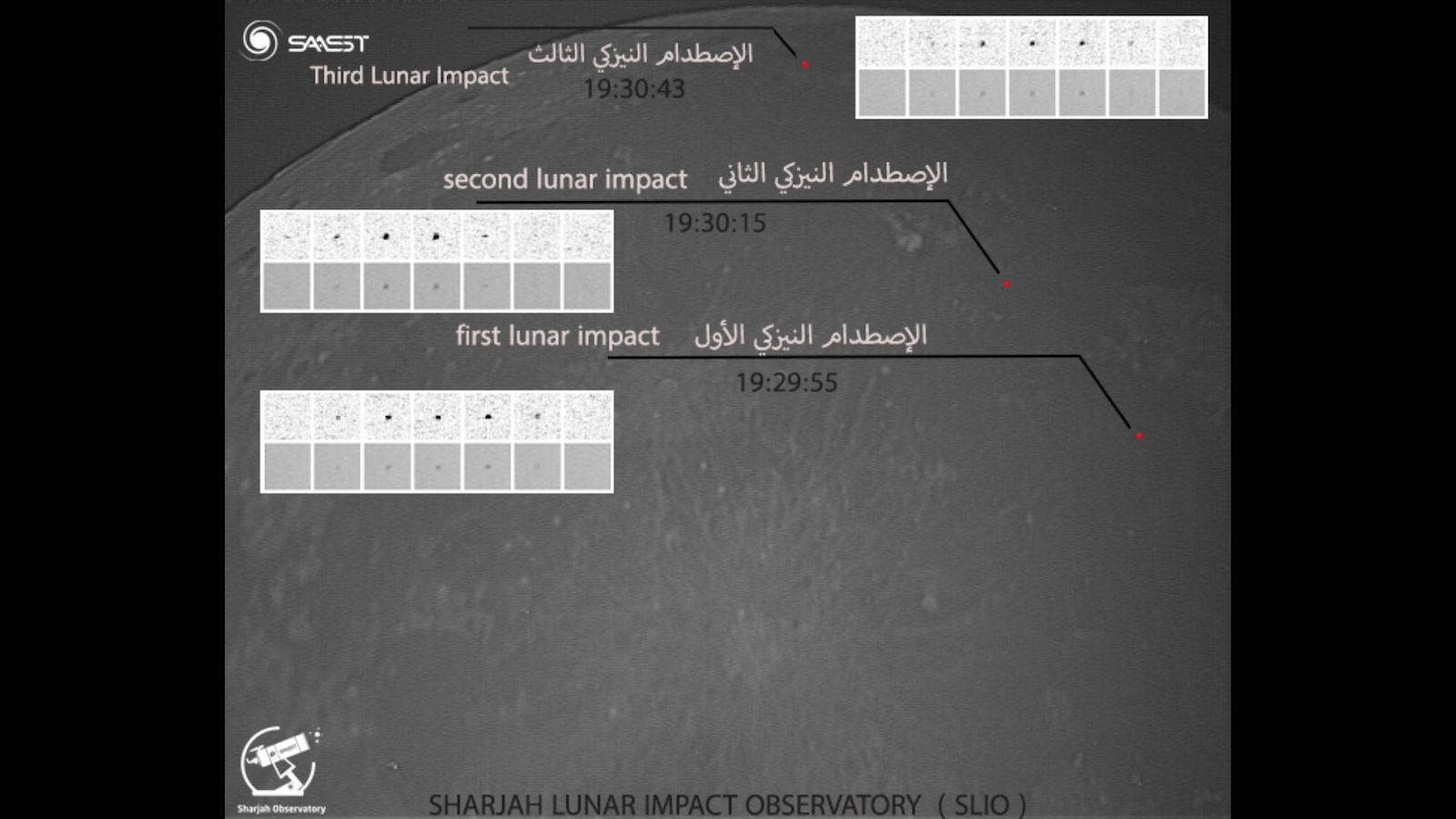56,000 MPH Space Rock Hits Moon, Explosion Seen in 2013!


- The impacts have created new craters on the surface of the Moon.
Detected by the Sharjah Astronomical Observatory, the team has analysed the time of impacts and their relative positions. Based on this, it has been determined that they are a series of meteorite impacts. They resulted from the disintegration of the meteoroid due to the gravitational pull of the Moon as it approaches its surface.
It appears from preliminary analyses that these impacts have created new craters on the surface of the Moon ranging in diameter from 5 to 10 metres.
SAASST's Sharjah Astronomical Observatory Observer and Research Assistant, Mr. Mohammad Fadil Talafha, detected rare sequential lunar impacts on January 18th, 2021.
For more: https://t.co/UC1UrdSCP4
..@uSharjah #astronomy #space #technology #sharjah #uae #SAASST #usharjah pic.twitter.com/FoZbcW1Nly— SAASST.Sharjah (@SaasstSharjah) January 26, 2021
Prof. Mashhoor Ahmad Al Wardat, Vice-General Director of the Sharjah Academy for Astronomy, Space Sciences and Technology (SAASST) of the University of Sharjah, said the team is now working on a “deeper analysis” of these lunar impacts to determine the source and mass of the main object.
“This within the observatory’s various projects, which include monitoring galaxies and binary stars; studying variable stars; and determining the age of star groups — all to disseminate scientific information and support research projects.”
Meteoroids are fragmented and fall in pieces scattered longitudinally. This happened to the asteroid that hit Earth in 2008, and its parts were scattered over a wide longitudinal area in the Nubian Desert in Northern Sudan.
What distinguishes this series of impacts, he added, is that they occurred within a short time (one minute) and were of greater brightness than usual.
“Also, their flash periods were relatively long, as periods of up to a quarter of a second were recorded in each impact and this is considered a long time for such events. It is noticeable that these impacts spread in the middle of the dark eastern side of the Moon at the time of observation and spread over a distance of 1,000km on its surface.
Prof. Hamid M.K. Al Naimiy, Chancellor of the University of Sharjah, General Director of SAASST and President of the Arab Union for Astronomy and Space Sciences, said the impacts were observed using the Sharjah Lunar Impacts Observatory Telescope (SLIO).
“It consists of a three-metre-high dome equipped with a 14-inch Meade telescope and many sensitive instruments.”
The SLIO telescope conducts ground monitoring of the dark part of the Moon to determine the rates and sizes of large meteoroids that hit its surface.
“This is to enhance understanding of lunar impacts’ effects on space missions, which in turn helps protect and facilitate manned space missions. Monitoring such phenomena opens the gate to study the types and effects of such impacts on the surface of the Moon and how craters form over billions of years.”






No comments :
Post a Comment